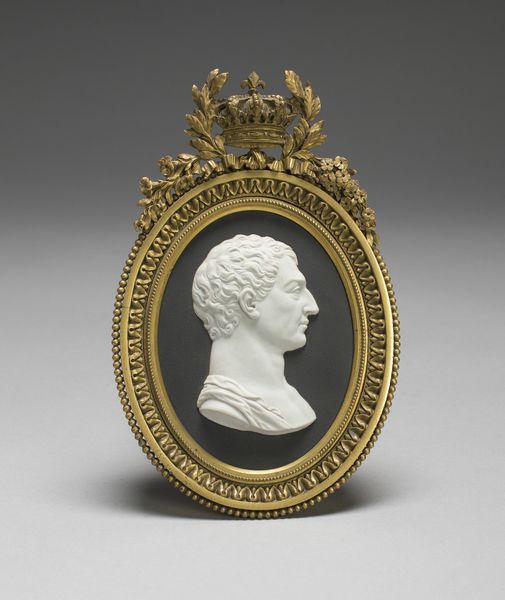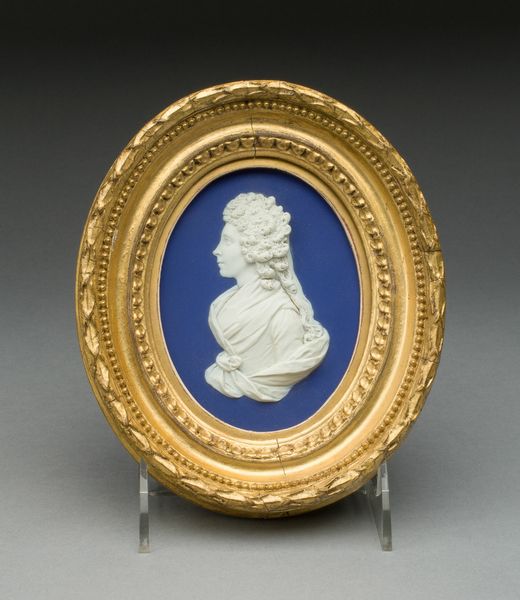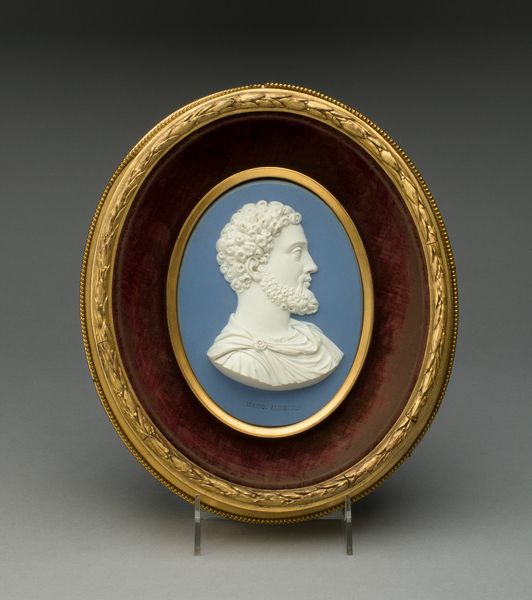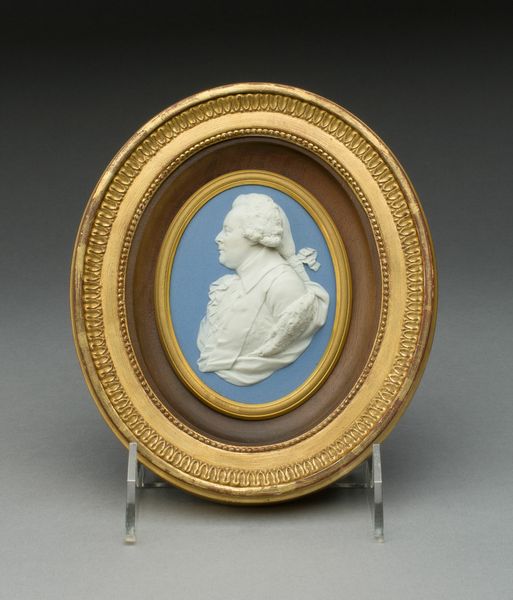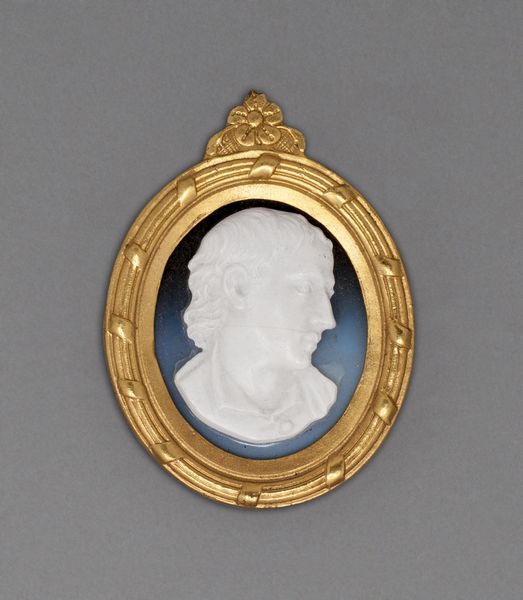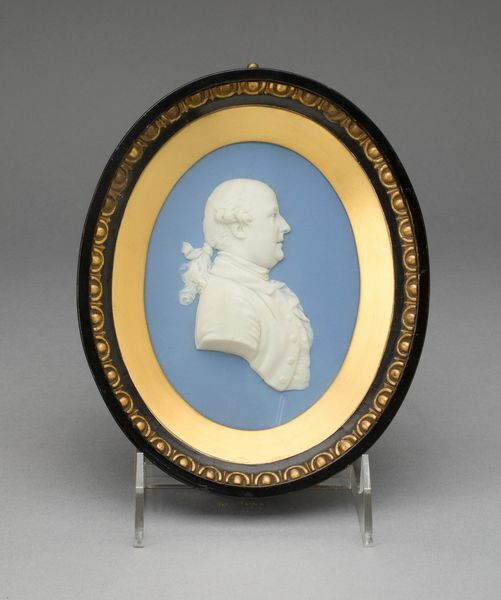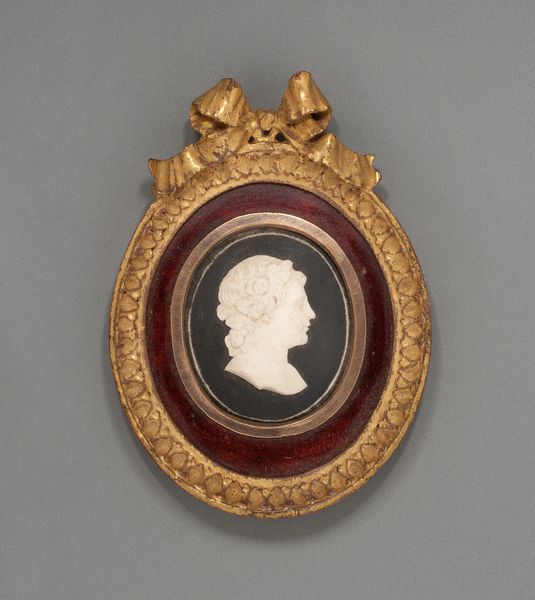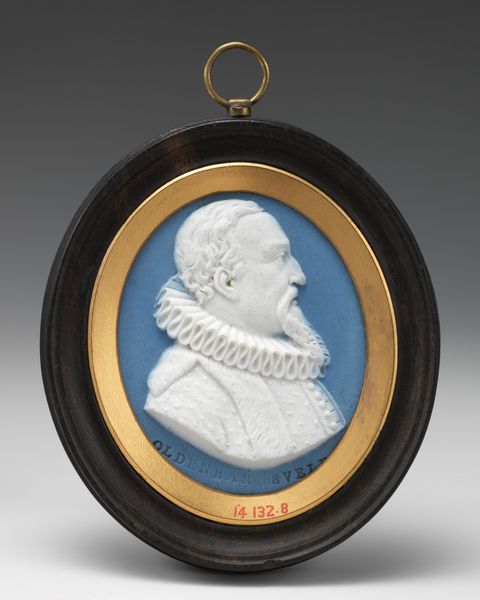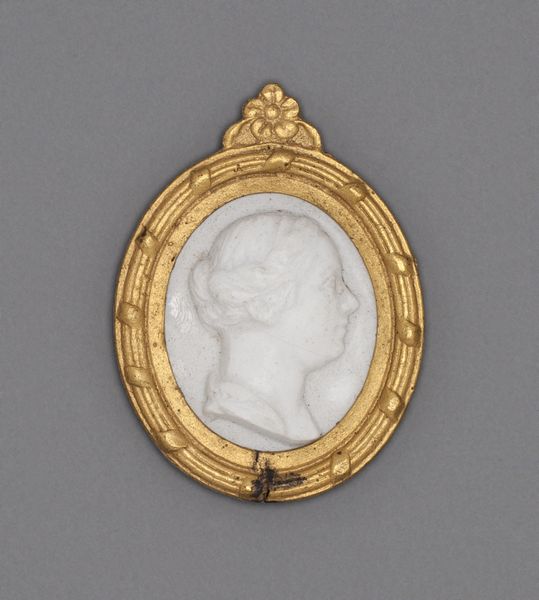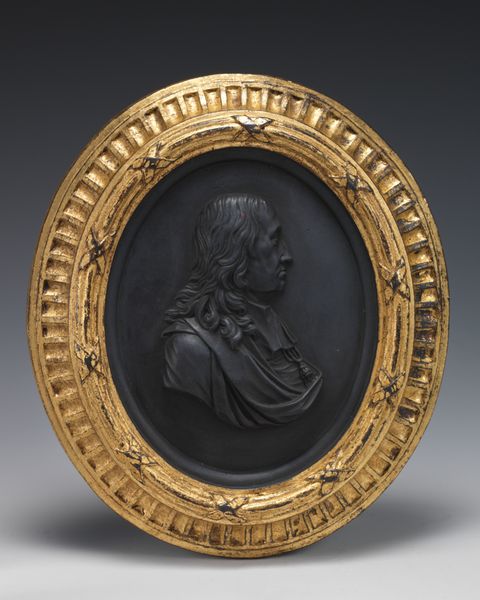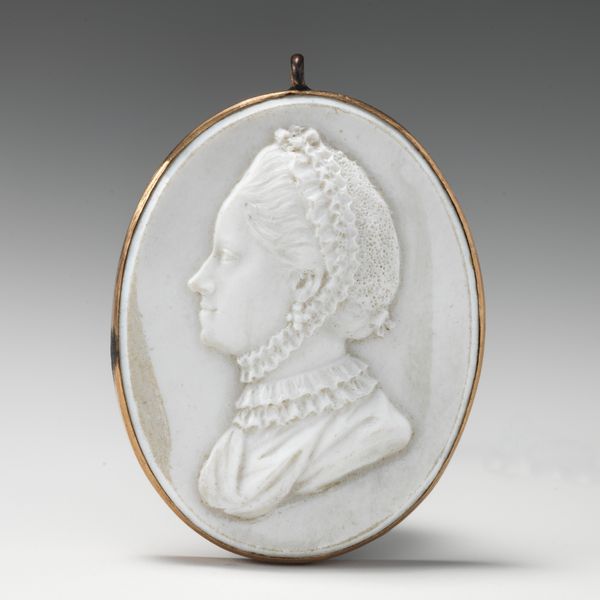
Frederick I William Charles, Duke of Württemburg c. 1797
0:00
0:00
metal, relief, ceramic, sculpture
#
portrait
#
neoclacissism
#
metal
#
relief
#
ceramic
#
classicism
#
sculpture
#
decorative-art
#
miniature
Dimensions: 26.7 × 18.7 × 3.2 cm (10 1/2 × 7 3/8 × 1 1/4 in.) Frame width: 4.8 cm (1 7/8 in.)
Copyright: Public Domain
Curator: This striking miniature relief, dating to around 1797, portrays Frederick I William Charles, Duke of Württemberg. It was crafted by the celebrated Wedgwood Manufactory. Editor: It's surprisingly severe, isn’t it? The stark white relief against that vibrant blue...it’s an almost aggressively formal statement. One has to wonder about the subject’s politics and societal role to understand what narrative this object conveys. Curator: Indeed. Wedgwood was deeply invested in Neoclassicism, a style that looked back to the order and supposed rationality of ancient Greece and Rome. Notice how the Duke's profile is rendered with such clean lines and minimal detail? The material—ceramic Jasperware—itself embodies these principles. It’s meant to convey permanence and refined taste. Editor: But “refined taste” was often a smokescreen. Württemberg was notorious for his absolutist rule. The elaborate, almost cartoonishly opulent gilded frame, crowned with royal symbols, seems to overcompensate. How might its acquisition and display perpetuate social inequalities? It becomes a tool of legitimization. Curator: Precisely, which also reflects an interesting tension between production and status. This object represents incredible material ingenuity on the part of the artisan, likely made through complex mold production rather than subtractive carving—democratizing status through mechanical reproduction. The piece presents as individualistic and handmade but could be, realistically, the opposite. Editor: Still, the almost clinical detachment of the portrait seems… telling. It highlights a specific understanding of leadership and detachment—as a visual argument for authority. Consider who would commission such an image, and for what purpose. Was it a token of appreciation for diplomatic services, or a flex of authority? Curator: Certainly. The composition reinforces hierarchy. The blue background throws forward a contrast of value. The portrait's symmetry adds to that sense of balance, control, even... coldness. Editor: By viewing the subject through that coldness, the object becomes very interesting for viewers who reflect on themes such as elitism and its long historical precedents. The decorative frame feels more like a cage—visually imposing power through enclosure. Curator: I find myself admiring the precise, refined artistic labor—while, in counterpoint, the visual and social rhetoric of absolutism grates. Editor: A perfect distillation of art’s power to simultaneously allure and provoke. A true snapshot of a complicated historical moment.
Comments
No comments
Be the first to comment and join the conversation on the ultimate creative platform.
